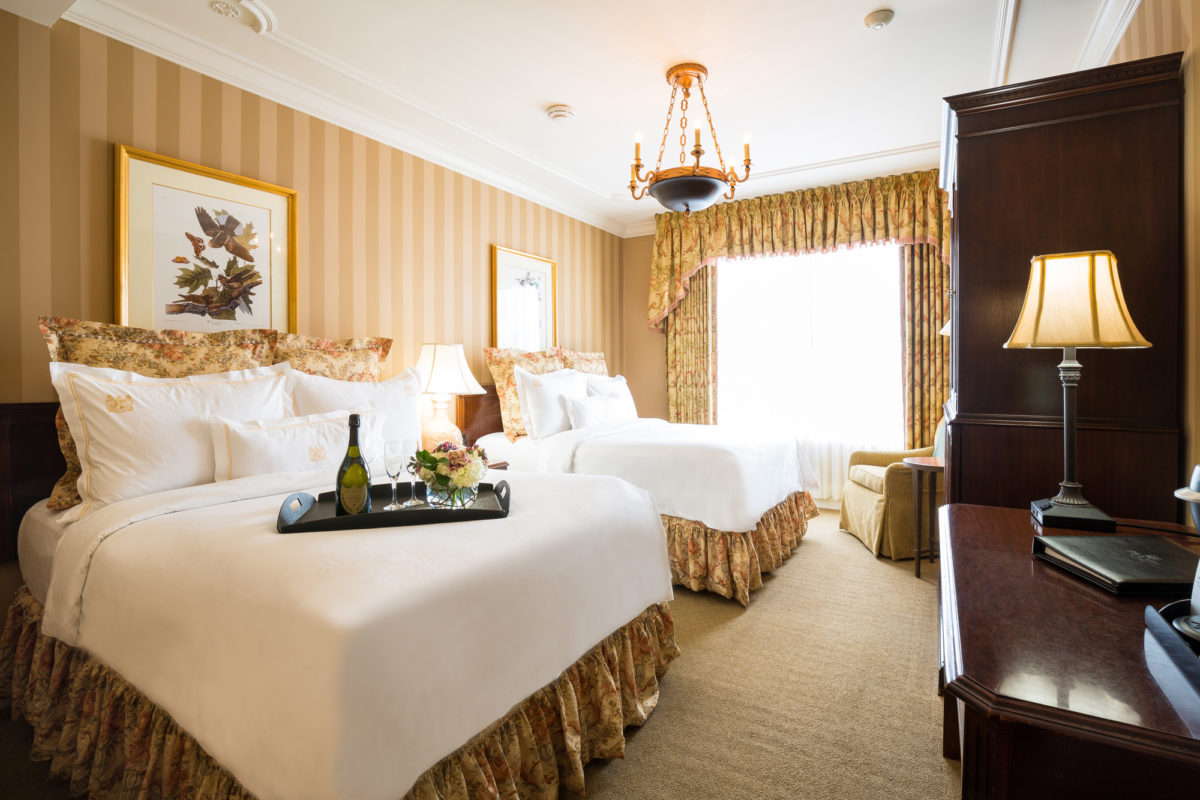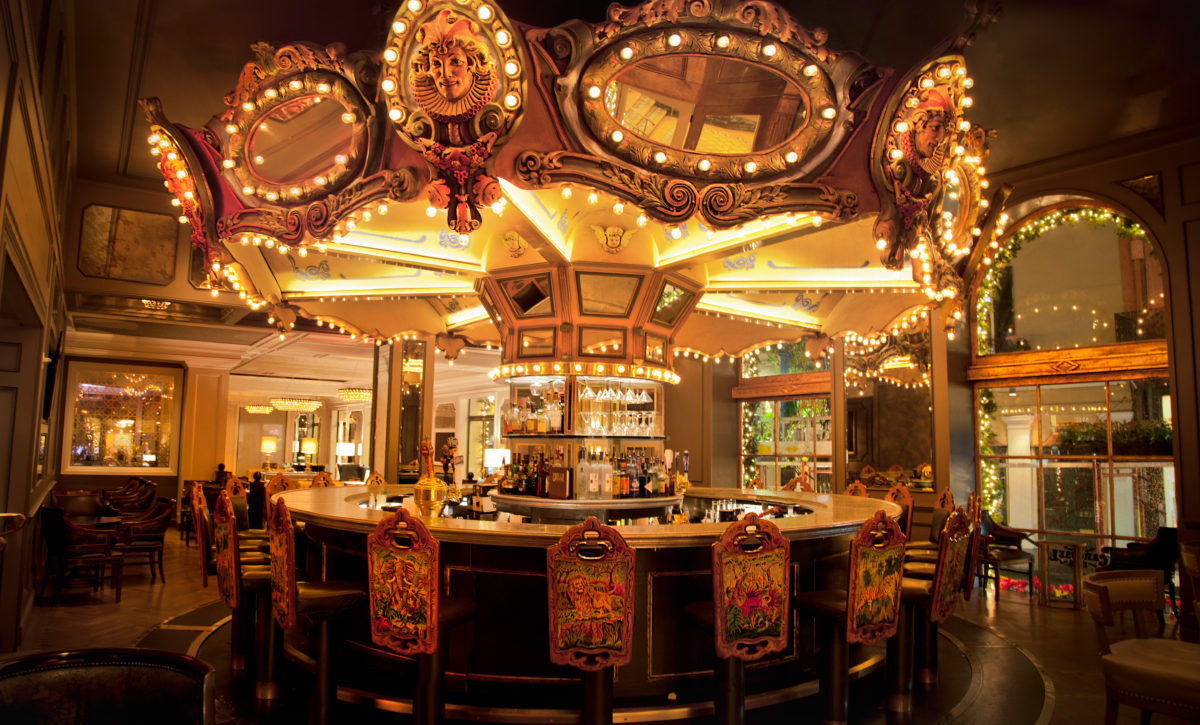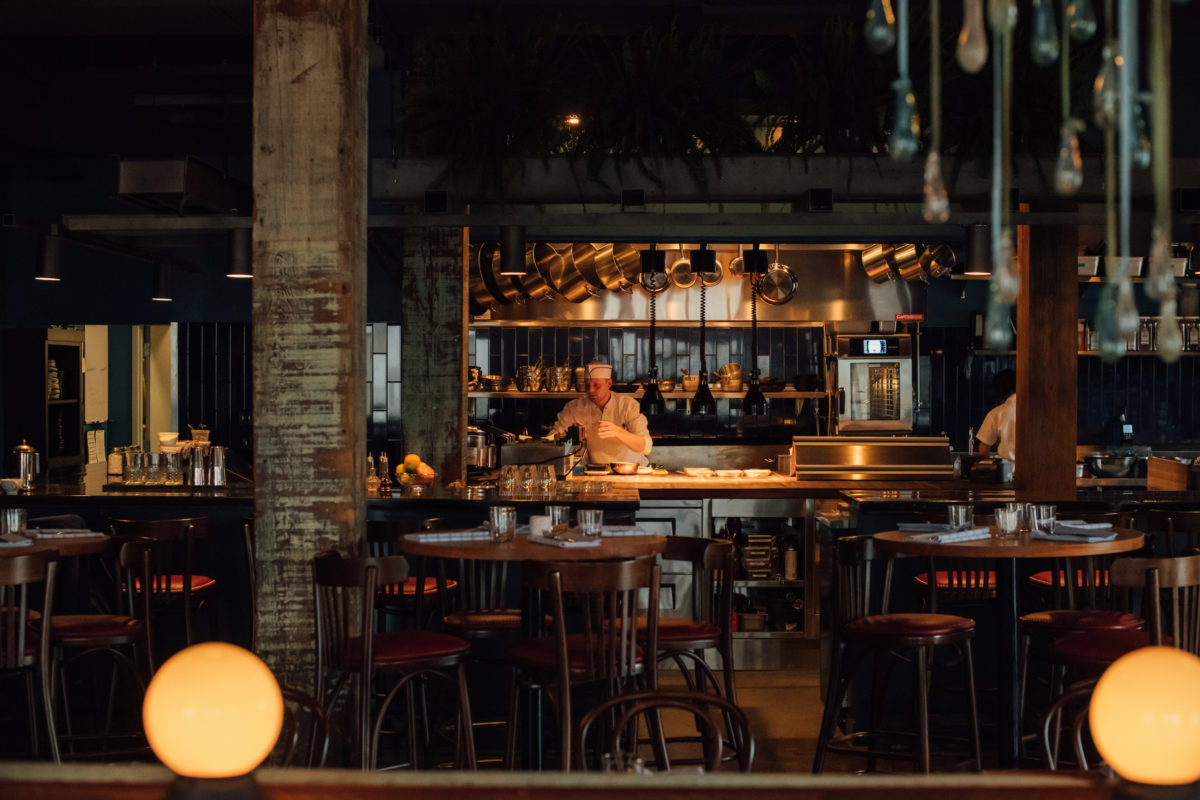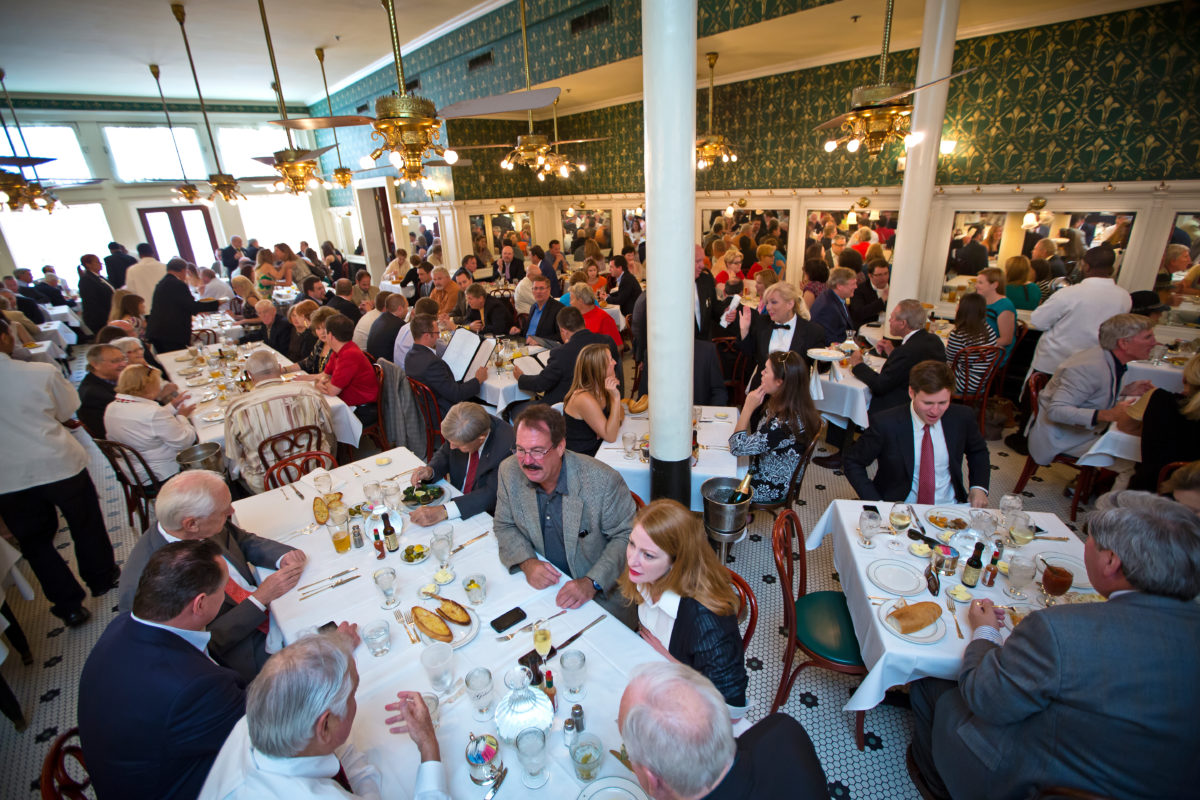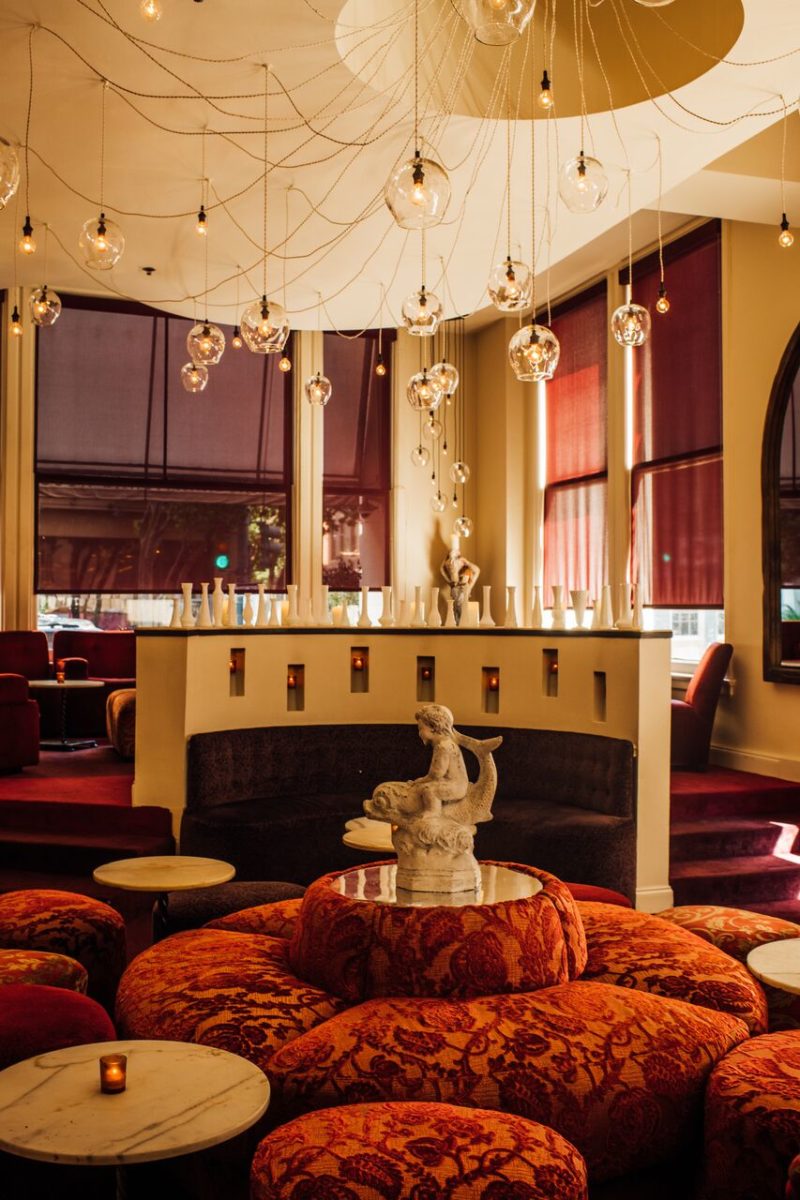With a landscape dotted with massive live oak trees draped in Spanish moss, antebellum mansions, and Creole cottages; air perfumed by sweet olive and night-blooming jasmine, streets lined with no-frills po’boy shops and colorful sno-ball stands, and the sounds of brass bands carried by the breeze, it’s easy to understand why 18 million visitors land in New Orleans each year.
The Crescent City is over 300 years old, with its own unique cuisine and culture—and there are many ways to explore it. Whether you want to toss back PBRs on the parade route during Mardi Gras, spend a day looking at the animals at the Audubon Zoo, climb fairytale-like trees in Audubon Park, dress up for an opulent dinner at a century-old restaurant (there are a few), or dance late into the night to the beat of a brass band, consider this a jumping off point for what this magical city has to offer. “New Orleans is a city with 300 years of history, architecture, culture,” says Mark Romig, President and CEO of the New Orleans Tourism Marketing Corp. “There are so many well-loved pieces of our culture that people gravitate to when they visit: beignets, cafe au lait, taking a carriage ride through the French Quarter, or sitting on the Mississippi River levee bank and watching the ships roll by.”
Below, we’ve mapped out how to take advantage of everything New Orleans has to offer in one weekend.
Where to Stay
Located shouting distance from the energetic live music clubs of Frenchman Street, this new boutique hotel in the Marigny neighborhood reinvigorated a long-vacant former church, schoolhouse, convent, and rectory built in the mid- to late-nineteenth century. The 71 rooms are all slightly different, with canopy beds, plenty of gingham, charming trompe l’oeil-painted armoires, and some with clawfoot tubs. Thoughtfully restored, the hotel feels anchored in time and fresh all at the same time. Make time for snacks and cocktails like olive oil-braised beef with white anchovies, whipped ricotta with marinated squash, and smoked baccala fritters at the hotel’s Elysian Bar, a brilliant partnership between chef Alex Harrell and the folks behind James Beard Award-winning bar Bacchanal.
If the French Quarter had a front door, the Hotel Monteleone would serve as the entrance. Just inside, visitors are reminded of its history of entertaining famous authors like Ernest Hemingway, Tennessee Williams, and William Faulkner. Truman Capote used to brag that he was born there, though his mother really made it to the hospital just in time. Though the rooms are opulent with antique furniture and gold accents, the hotel is wholly unpretentious. Be sure to take a spin at the Carousel Bar just off the lobby whether you stay at the hotel or not. With one ride every 15 minutes, it’s the ideal place to enjoy a Vieux Carre cocktail.
Where To Eat
The raucous yet refined dining room of this more-than-a-century-old Creole restaurant hums with energy as plates of oysters Rockefeller, shrimp remoulade, and crabmeat ravigote pour out of the kitchen. It feels lightyears away from the tacky t-shirt shops and giant frozen drinks of Bourbon Street where it’s located. Galatoire’s doesn’t accept reservations for the downstairs dining room, but that’s the only acceptable place to sit. Friday lunches are so popular among the city’s business elite that there’s even a burgeoning cottage industry of folks who earn extra cash by waiting in line for tables. Jackets required for dinner; check your sobriety at the door.
James Beard Award-winning chef Donald Link’s lively sandwich shop remains a favorite among locals and visitors for its flawless sandwiches and strong charcuterie program. Some say Butcher serves the best muffuletta in town, but you can’t really go wrong with anything on the menu, like the hogshead cheese with chow chow or Le Pig Mac, a cheffy twist on the Big Mac with two pork patties.
This way-under-the-radar wine bar with an affinity for imported canned seafood will make you feel like you like you’ve just landed at the most intimate restaurant in France. The space feels like another world with a vintage red Citroen parked in front, thriving banana trees swaying in the breeze, and French maps hanging on the walls of what was a tire shop in another life. Choose from a menu of natural wines from Europe, imported canned seafood served with baguettes, tartines, charcuterie, seafood like mussels steamed in sake, and classic French dishes. A word to the wise: The restaurant is a bit hidden, so take a look at some Instagram photos of the exterior before you go.
Though it’s easy to find the superb, farmed Gulf oysters in many restaurants in New Orleans, this old-school, 1920s-era oyster house still serves big, wild oysters with a side of lively banter from the shucker. Located on bustling Magazine Street, this 1920s-era oyster joint’s humble interior is covered from top to bottom in cream and green square tiles as it has always been. In addition to raw oysters, be sure to try the fried oyster loaf, similar to a po’boy but served on thick slabs of toasted white bread. Do know that with all the nostalgia comes adherence to its pre-refrigeration traditions: Casamento’s closes during the summer.
For a dose of affordable Creole soul food, visit this no-frills Tremé-area breakfast and lunch cafe for catfish and grits, fried chicken, gumbo, jambalaya omelets, and more. Li’l Dizzy’s closes at 2 p.m., so plan accordingly.
The second restaurant from James Beard Award-winning chef Nina Compton keeps the standards sky high with menu items like jerk chicken rice, spaghetti pomodoro, and an impossibly fluffy, Crystal hot sauce-tinged hollandaise over steamed snapper. Weekend brunch is as good as dinner. Try the kimchi fried rice or the smoked tuna toast topped with “everything bagel” spices.
Places To Drink
Located at the farthest end of the eclectic Bywater neighborhood, Bacchanal is a wine shop, Mediterranean-style restaurant, and live jazz venue all rolled into one chill, all-day backyard party. Grab a bottle of Old World wine in the little shop, then slip out back and stake your claim amongst the sounds of live jazz at one of the mismatched tables. Order the cheese plate, smoked catfish dip, patatas bravas, or a whole grilled fish and settle in. The unassuming, James Beard Award-winning spot also has a cocktail bar upstairs.
Hidden behind the façade of a charming, century-old shotgun house on bustling Magazine Street, the interior space of this smart cocktail lounge is so meticulously conceived in a handsome, mid-century style that it’s not hard to imagine Don Draper brooding over an old-fashioned while cool, old-school vinyl spins from the record player. The cozy walnut walls invite you to linger over brown liquors like Bourbon and Scotch. Start with the fig Old Fashioned, smooth with a complex sweetness that beats those made with the more typical simple syrup. The wine menu is robust, and bartenders are experts at pairing pours with small plates like the sublime ricotta and sofrito anchovy toasts. Add to the mix gouda beignets, fried blue crab claws, an excellent beet-cured salmon, and Vietnamese short ribs and you might find yourself skipping that dinner reservation altogether.
Thanks to the Louisiana state legislature, the Sazerac became the official cocktail of New Orleans in 2008. Though it’s easy to find stellar versions of this rye whiskey-based sipper all over town, there is hardly a more iconic place than the Sazerac Bar in the Grand Roosevelt Hotel. With restored Art Deco-era Paul Ninas murals of New Orleans docks uncovered during the renovation, a long, dark walnut bar, and plush club seating, the historic bar has attentive service to match. Try the Ramos Gin Fizz; famed 19th-century bartender Henry C. Ramos sold his original recipe to the bar and it still makes a precise version.
The Monday night special at this rowdy hole-in-the-wall near the French Quarter and Frenchman Street is a shot and a haircut for $10. The quintessential New Orleans dive bar experience, expect pool, dim lighting, cheap drinks, and great people-watching.
Located in the posh International House Hotel, LOA is the place for those in search of less traditional, creative cocktails. Velvet seating, offbeat vintage glassware, and plenty of votives compliment the sultry and seasonal cocktail menu.
What To Do
Sydney and Walda Besthoff Sculpture Garden
Occupying nearly 11 acres in the City Park, the Sydney and Walda Besthoff Sculpture Garden is notable not only for its size and important sculptures, but also for its location within a landscape covered with pines, magnolias, live oaks, irises, and two lagoons. The sculpture garden is just across from the New Orleans Museum of Art. It’s all located within City Park, which was designed by Frederick Olmstead, who also designed New York’s Central Park. It’s the second largest city park in the U.S. and worth exploring on its own. Admission to the sculpture garden is free.
The French Quarter’s Royal Street is lined with antique stores of all sorts. Coins and rifles, furniture and jewelry, and the culinary store Lucullus are just a few of the things you may come across.
Live Music on Frenchman Street
Frenchman Street’s calling card is its live music venues. Try the homey Spotted Cat Music Club for brassy jazz or Three Muses, where Chef Dan Esses dishes roasted cauliflower salad, pommes frites with feta, and gremolata alongside the live music at this Frenchman Street favorite.
Because of the high water table, New Orleans buries its dead above ground in often ornate mausoleums. These “cities of the dead” make up part of the patchwork quilt urban design of New Orleans, and you’ll find the city’s iconic cemeteries in most neighborhoods. The most famous is St. Louis Cemetery No. 1, the final resting place of Voodoo queen Marie Laveau.
Southern Food and Beverage Museum
Explore and celebrate the food of the American South. Understandably, the Louisiana collection is the most robust, which makes it a great stop for those who want to gain a deeper understanding of Louisiana cuisine. Check the calendar for Creole cooking classes, book signings, and more events. The adjoining restaurant, Toups South, serves incredible upscale Southern cuisine—and you can grab a drink from the cocktail bar to carry with you through the museum.
Where and How to Experience Music in New Orleans
Frenchman Street
Lined with venues, Frenchman Street lives up to its reputation as the live music epicenter of New Orleans. Spend an evening on the street popping in and out of the Spotted Cat Music Club, Snug Harbor, Three Muses, Blue Nile, and more destinations for live music.
Located on the far edge of the Bywater neighborhood, this interactive musical “sculpture garden” feels post-apocalyptic with its little musical houses made of repurposed building materials. Visitors can climb into the houses and explore sound through various surprises like doors that make music when opened, floorboards that sound like an instrument when stepped on, wind chimes tuned to specific notes, and more. The space is also used for performances from the likes of Tank and the Bangas to Big Freedia.
While driving around the city, tune your radio to 90.7 WWOZ, New Orleans’ jazz and heritage station. The listener-supported station started broadcasting in the 1980s. The call letters were chosen in reference to the Wizard of Oz’s famous line, “Pay no attention to the man behind the curtain.” The idea is that the station is about the music—not the disc jockey.
Jazz Brunch at Commander’s Palace
Though jazz brunches have spread all over the globe, the lively tradition started at Commander’s Palace. A New Orleans landmark since 1893, Commander’s sets the bar for New Orleans hospitality and pushes the limits with its haute Creole cuisine. Be sure to end the meal with the ethereal bread pudding souffle.
Hit the Festival Circuit
New Orleans has more festivals on its calendar than there are days in the year. Nearly all of these include live, local musical acts as entertainment, but Jazz Fest, French Quarter Fest, and Satchmo Fest put the music front and center with a dizzying number of acts over several days.
Visit the Music Clubs not on Frenchman Street
Be sure to venture beyond Frenchman Street to some of the other music venues that dot the Crescent City. The Maple Leaf, located Uptown, features the beloved Rebirth Brass Band every Tuesday starting at 10 p.m. In Tremé, Kermit Ruffins’s Mother-in-Law Lounge features Kermit Ruffins and the Barbecue Swingers among other acts throughout the week. Bullet’s Sports Bar, also located in the Tremé neighborhood, often hosts the Tremé Brass Band and sometimes dishes charbroiled oysters.
Located in the Old U.S. Mint at the end of Decatur Street near the French Market, the New Orleans Jazz Museum houses over 25,000 jazz artifacts like sheet music, instruments, and more. It’s the largest collection of its kind and well worth a visit.





